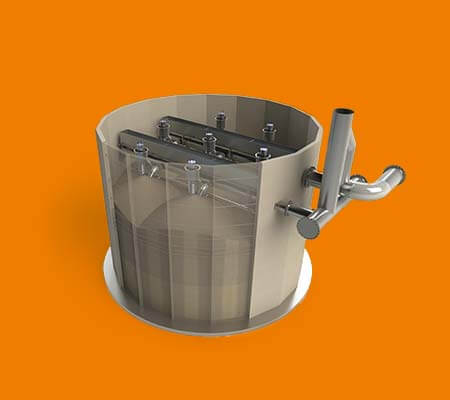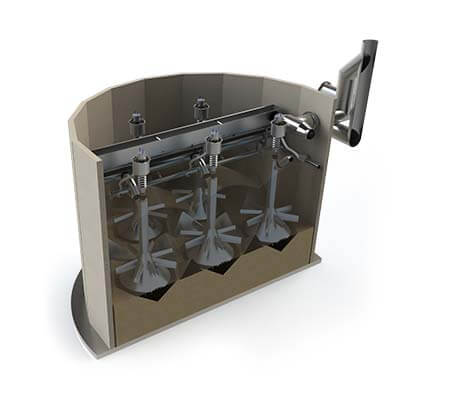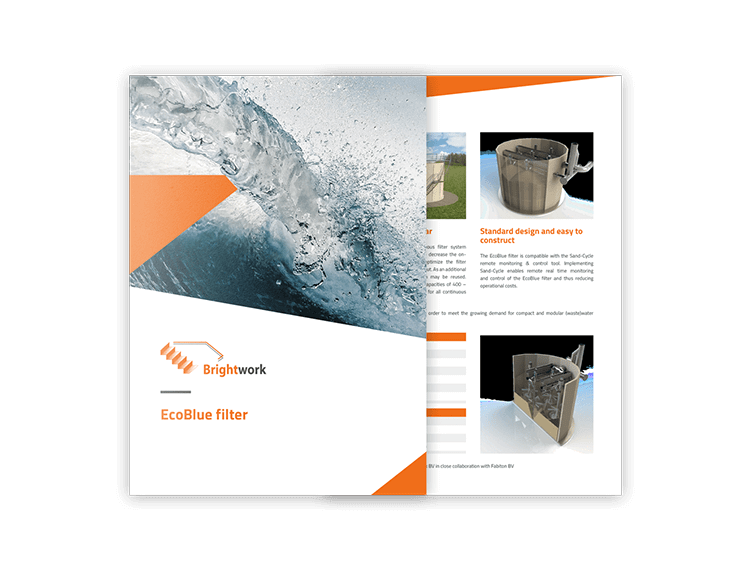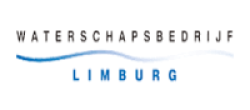EcoBlue Filter
A modular circular sand filter design, based on the Verdygo principles results in a continuous media filter reactor with a capacity of 400 – 600 m3/h each. Both sand and granular activated carbon may be applied.
EcoBlue Filter
Large capacities
The EcoBlue continuous filter is designed to treat high flows in a cost efficient way. An Eco Blue filter unit may treat 400 – 700 m3/h feed flow. Multiple units may accommodate any design flow.
Prefabricated
The method of construction of the EcoBlue filter is modular, prefabricated and reusable. The tank is built out of prefab concrete wall elements. The on-site construction time is limited.
High performance
The circular continuous filter design means dead filter zones do not exist anymore. Hence the full filter area contributes to the filtration area. A high process performance is achieved

Compact and modular
A compact and modular continuous filter system for large capacities is designed to decrease the on-site construction time and to optimize the filter performance by a circular tank lay-out. As an additional feature the modular tank design may be reused. The EcoBlue filter is suitable for capacities of 400 – 10,000 m3/h and may be applied for all continuous filtration applications.
Standard design and easy to construct
Moreover, the EcoBlue filter is compatible with the Sand-Cycle remote monitoring & control tool. Implementing Sand-Cycle enables remote realtime monitoring and control of the EcoBlue filter and thus reducing operational costs.

Applications
Biological denitrification
Biological denitrification is used to reduce total nitrogen in both water and waste water. Nitrate-nitrogen is effectively converted into nitrogen gas by heterotrophic biomass maintained in the filter under anoxic conditions. Both in water and waste water applications nitrate-nitrogen can be reduced to levels < 1 ppm.
Biological nitrification
In nitrifying continuous filters nitrifying biomass is cultivated under aerobic conditions. A dedicated and targeted fine bubble aeration inside the biofilter promotes the growth of autotrophic nitrifying biomass on top of the sand grains. The biofilm proves highly effective to convert ammonia-nitrogen into nitrate-nitrogen over the full filter bed height.
Phosphorus removal
Both soluble and particular phosphorus is effectively removed physically and chemically. Depending on the speciation of the phosphorus present a coagulant is dosed for flocculation of the soluble phosphorus. The continuous filter is capable of removing solids and phosphorus to levels as low as 3 ppm solids and 0.1 ppm phosphorus. Hence the most stringent effluent criteria may be met.
Suspended solids removal
Continuous filters are highly efficient in removing high levels of both organic and inorganic solids, due to the continuous sand washing.
This feature makes it possible to apply the technology for high solids loads, such as direct filtration of surface water, primary and secondary filtration of waste water.
Wash water treatment
Backwash water generated in conventional rapid gravity filters, used in drinking and process water production is effectively treated in a compact wash water treatment scheme. A highly effective part of this scheme is continuous filtration, handling high solids concentrations and producing water, fit for reuse in the main process.
Groundwater treatment
Efficient treatment of groundwater is focusing upon a combination of aeration / degasification and continuous filtration. Groundwater, containing iron, manganese and ammonia is effectively treated. Removal of these components by simultaneous physical-chemical and biological processes to meet drinking water standards.
Bypass filtration in cooling water circuits
Bypass filtration in open recirculating cooling water systems proves to be very effective in optimizing operations and increasing sustainability.
Implementing bypass continuous filtration leads to a reduction in conditioning chemicals dosed, a higher energy transfer rate in the heat exchangers and a higher anticipated economic lifetime of the heat exchangers.
Surface water treatment
Direct continuous filtration is widely applied to treat surface water in order to remove turbidity, solids or colour. Direct filtration, with inline feed dosing of an appropriate coagulant is applied. Flocculation and floc removal is taking place within the filter bed. As a result, a stable and high quality filtrate is produced.

Download the Ecoblue filter leaflet.









